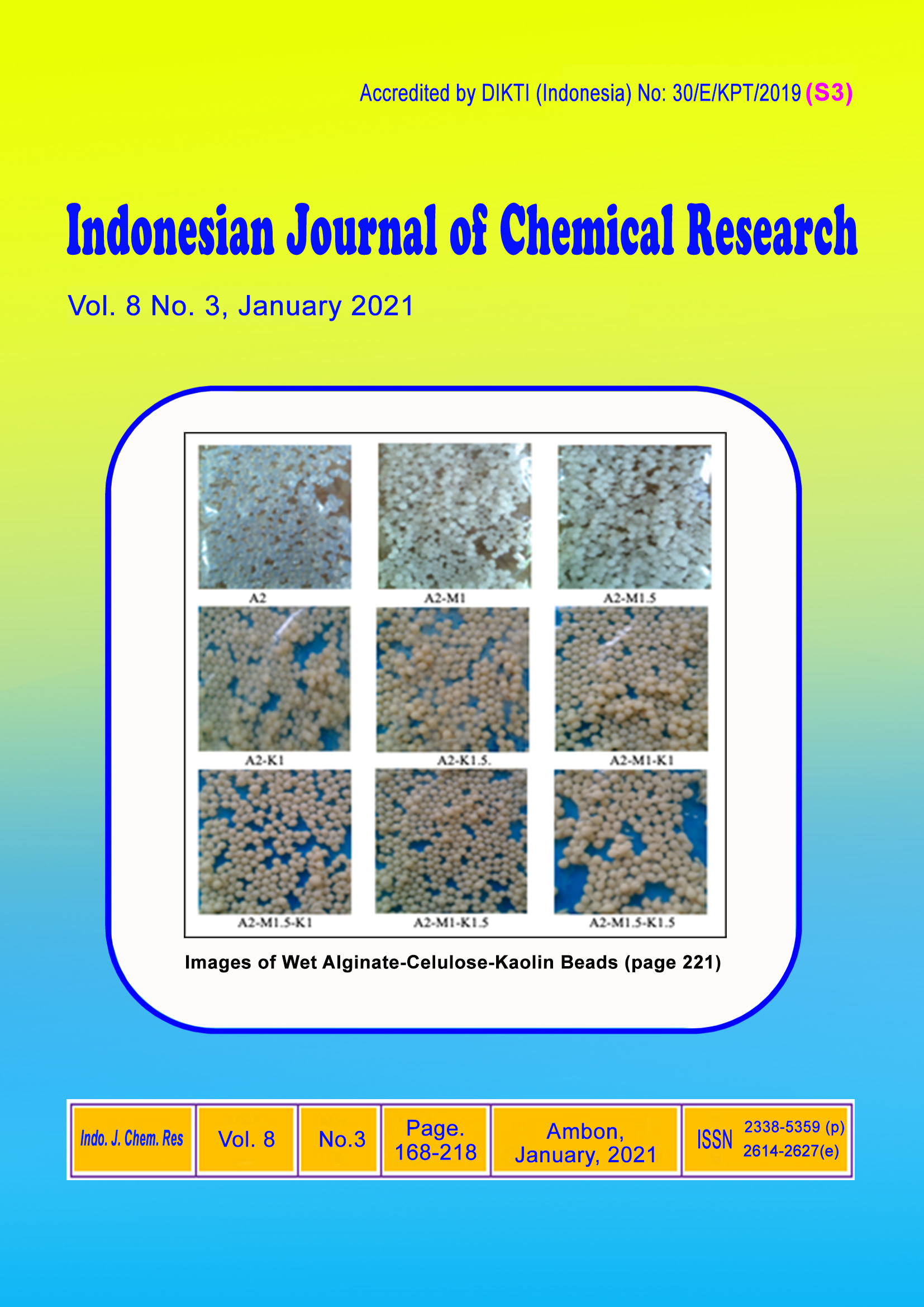Study Microstructure of Fe3O4 Modification Using PEG 4000 form Iron Sand at Wari Ino Beach As A Biosensor Application
Abstract
Fe3O4 encapsulated PEG form iron sand at wari ino beach has been successfully synthesized by co-precipitation method. The average particle size of the nanoparticle 11,3 nm was determined by scherrer formula. Fe3O4 modification PEG 4000 was successfully encapsulated the samples by the presence C-O-C and CH bonding that were characterized using Fourier Transform Infra Red (FTIR), X-Ray Diffraction (XRD) pattern shows that all samples are formed by single phase cubic spinel magnetite , and Scanning Electron Microscopy (SEM) shows the high dispersion capability while encapsulated process using PEG. The results of the characterization show that the Fe3O4 successfully encapsulated by PEG 4000.
Downloads
References
.
Copyright (c) 2021 Kurnia, Meidy Kaseside, Steven Iwamony

This work is licensed under a Creative Commons Attribution-NonCommercial-NoDerivatives 4.0 International License.
Authors who publish with this journal agree to the following terms:
- Copyright on any article is retained by the author(s).
- The author grants the journal, the right of first publication with the work simultaneously licensed under a Creative Commons Attribution License that allows others to share the work with an acknowledgment of the work’s authorship and initial publication in this journal.
- Authors are able to enter into separate, additional contractual arrangements for the non-exclusive distribution of the journal’s published version of the work (e.g., post it to an institutional repository or publish it in a book), with an acknowledgment of its initial publication in this journal.
- Authors are permitted and encouraged to post their work online (e.g., in institutional repositories or on their website) prior to and during the submission process, as it can lead to productive exchanges, as well as earlier and greater citation of published work.
- The article and any associated published material is distributed under the Creative Commons Attribution-NonCommercial-NoDerivatives 4.0 International License.






_copy1.png)










